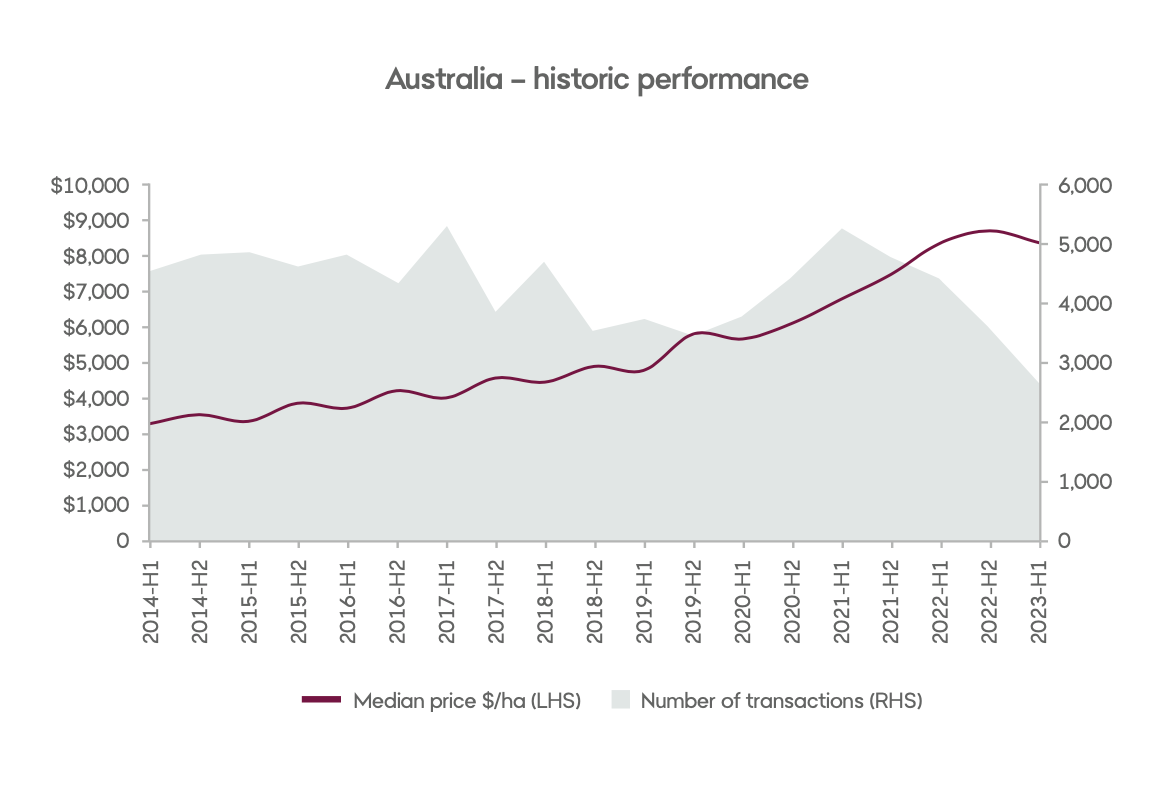
Rural Bank's latest survey of farmland values has shown transactions have fallen to their lowest level in 28 years, with the lender predicting flat or declining prices going forward.
While median farmland prices are up on the same half last year, the report has found that prices are on a decline, with a drop of 3.9% compared in the last six months. The Rural Bank report said that price declines in the first half of a calendar year are not uncommon, with a trend of 3.1% average falls in the five years prior to 2021.
Weather, commodity prices and interest rate rises explained the drop in sentiment, according to the lender.
Rural Bank's Commodity Price Index, which combines major agricultural commodities into a single value, was down 22% in the first half the year, and down 35% since June 2022. Livestock prices declines were the main driver of the fall in the Index.
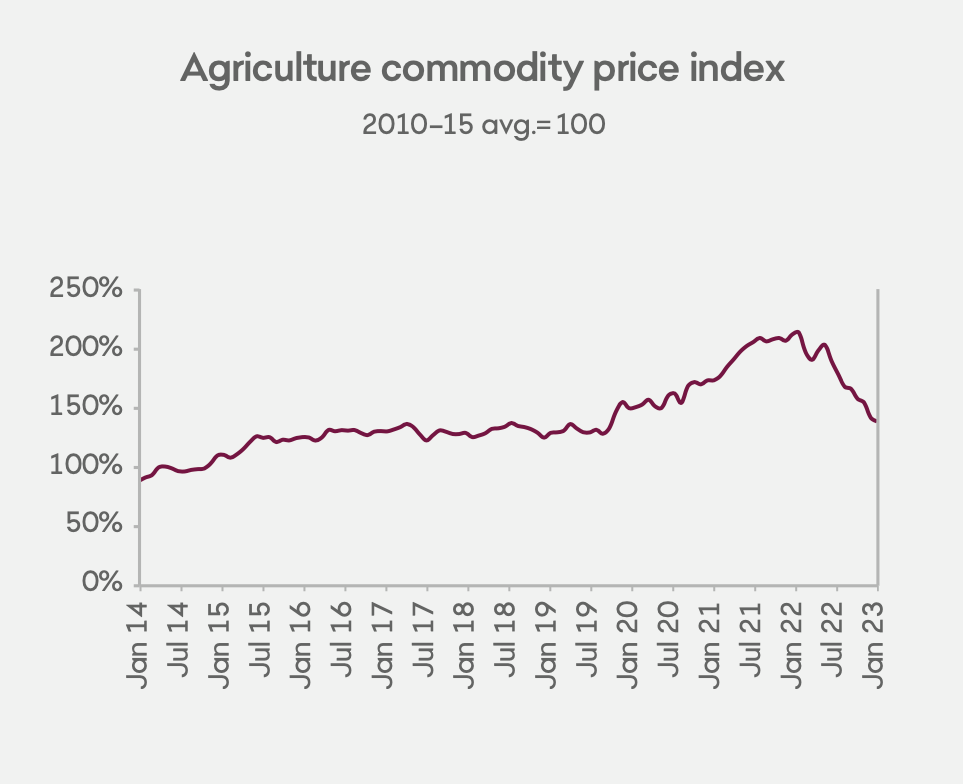
The announcement of an El Niño was expected to further depress demand. Soil moisture has declined well below-average in most parts of New South Wales, Queensland and Western Australia, while Victoria and South Australia are average to below-average, the report said.
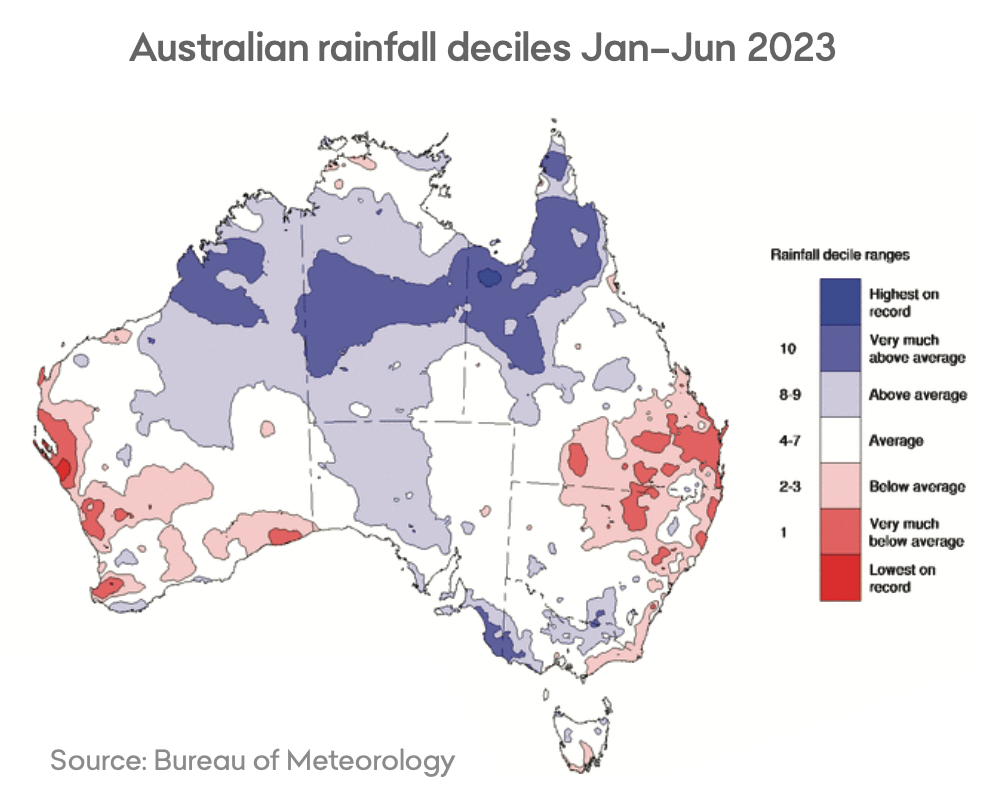
Four further rate rises, to 4.1%, in the first half of 2023 compounded concerns around lower commodity prices and drier conditions, and the bank expected that rates would remain around that level through 2023 and into 2024.
Mixed bag across the country
In the first half of 2023, Western Australia, New South Wales, and South Australia saw the strongest year-on-year growth.
Victoria's growth was more modest, marking a significant slowdown compared to the previous four halves, which had seen year-on-year growth of over 20 percent.
Queensland saw a decline in median price, with price variance across different regions of the state.
The median price in Tasmania driven by big falls in the Northern region.
Reflecting market conditions, median prices in cropping regions remained consistent while demand in grazing regions was weakened by declining livestock prices.
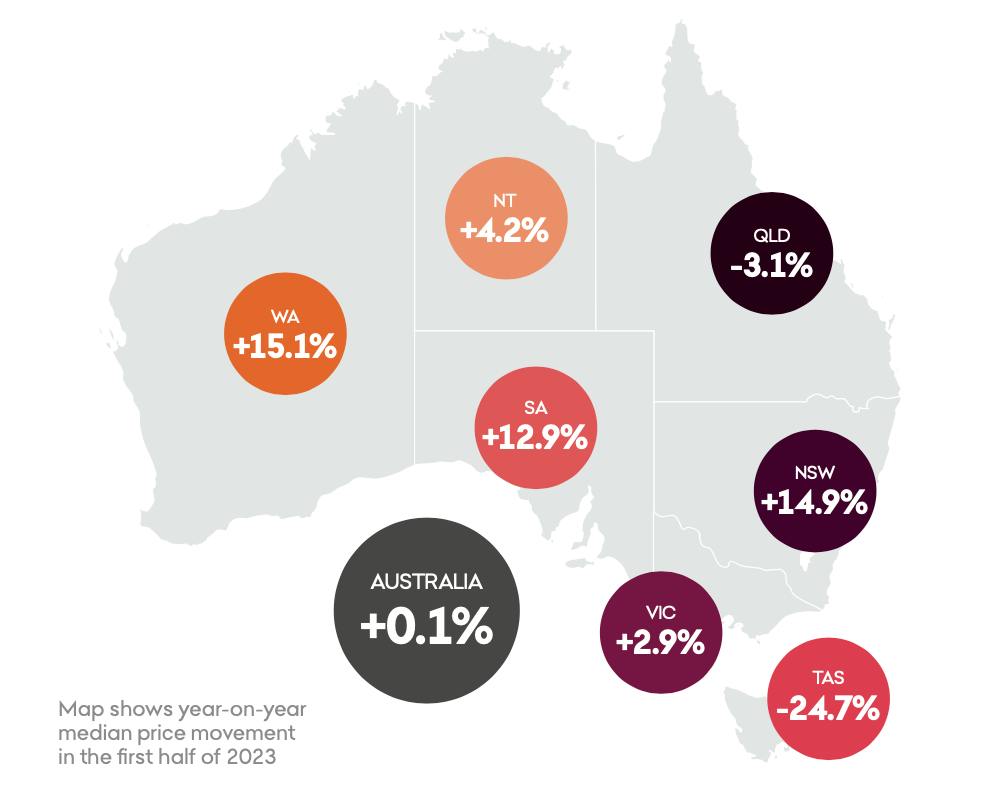
Property Outcomes: State by State
Queensland
According to Rural Bank, the median price per hectare for Queensland farmland in the first half of 2023 fell to $7,822/ha - a year-on-year decline of 3.1% and a 4.5% fall in the last six months.
Half of Queensland’s regions recorded half-year increases with the other half of regions declining.
With only 643 transactions in the first half of 2023, this was the lowest volume recorded in a half-yearly period in at least 28 years.
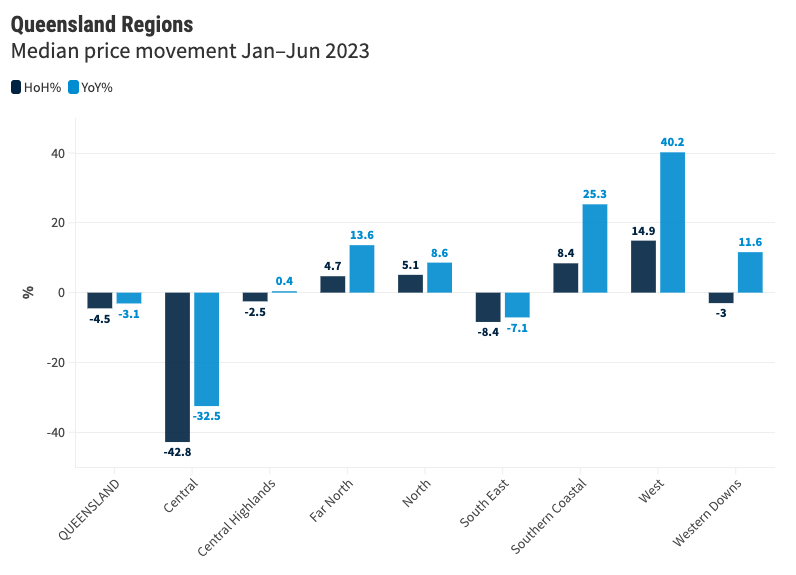
NSW
The median price per hectare of farmland in New South Wales increased to $8,649/ha, up 14.9% compared to the first half of 2022, and 12% higher than second half of 2022.
New South Wales was the only state to record growth from the second half of 2022 and has overtaken Queensland to now have the third largest state median value.
There were 778 transactions recorded in New South Wales in the first half of 2023, down 36.9% which was also the lowest volume for a half-yearly period in the last 28 years.
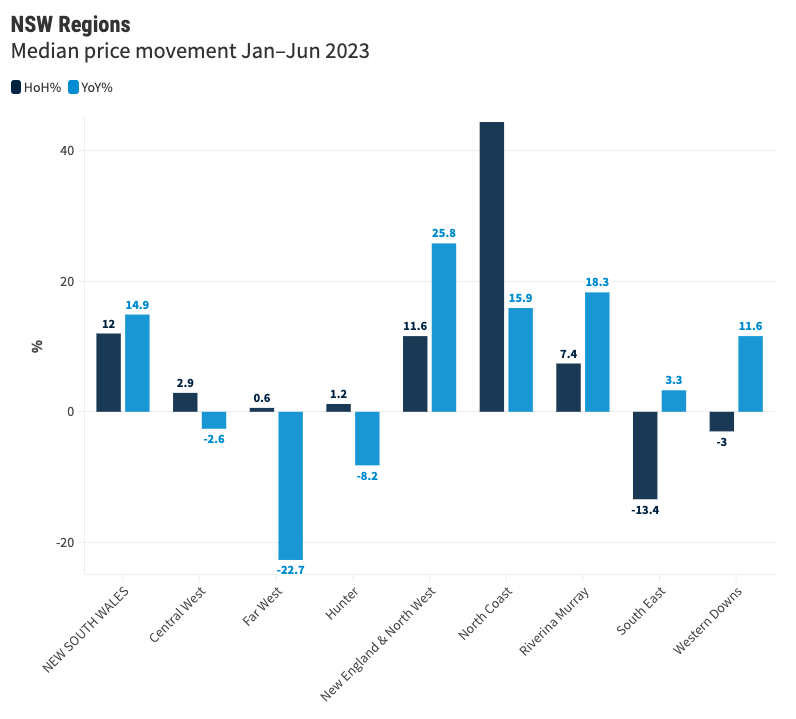
Victoria
The median price eased to $13,035/ha, up 2.9% compared to the first half of 2022, but 11.1% lower than the second half of 2022.
Transactions over the half dropped 38.6% to 408 and are down 50.8% year-on-year. This was the lowest number of transactions for a half-yearly period on record for Victoria.
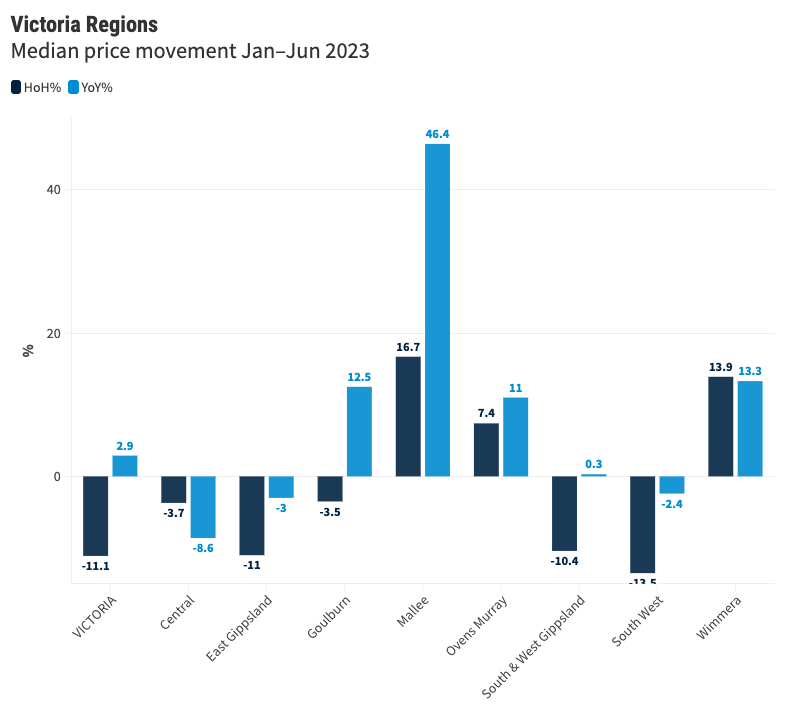
Tasmania
The median price per hectare fell 24.7% to $14,034/ha, 24.7 per cent lower than a year earlier. It's the first drop in year-on-year prices since 2019 and follows year-on-year growth ranging between 15–33% over the last three years.
Transactions fell 63.9% to just 60 - the lowest in 28 years.
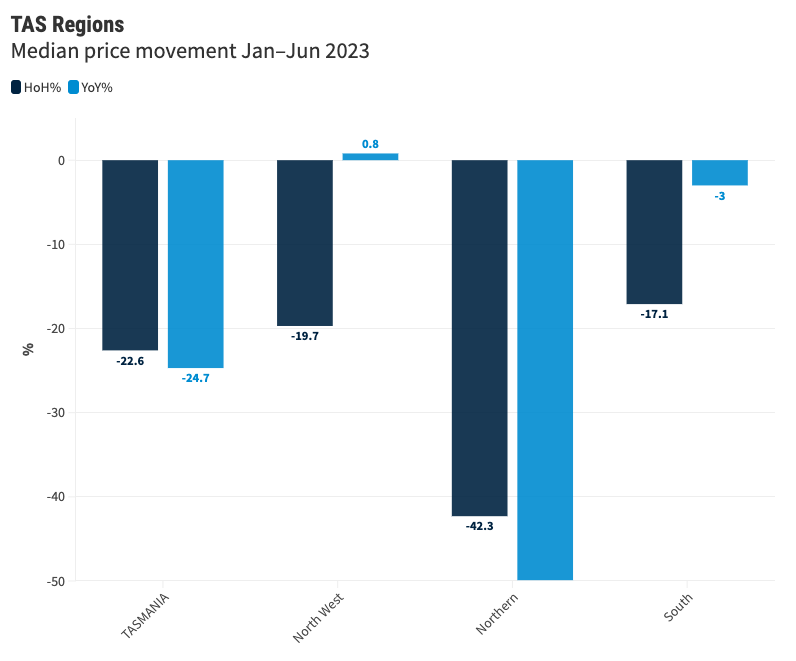
South Australia
The median price fell to $6,892/ha, down 2.4% over the past six months but up 12.9% year-on-year. Transaction volume was 501 sales, down 13% from H1 2022, but still 10% above the five-year average.
According to Rural Bank it is quite common for the median price to drop in the first half of a year as cropping property sales drop off due to harvest in second half of the year.

The phenomenal rise in prices in the North of South Australia were driven by a substantial rise in median across cropping properties. Half yearly sale volumes were at record highs as a result of the substantial demand.
Western Australia
Median price per hectare rose 15.1% year-on-year to $4,741 with the Great Southern and Great Eastern regions hitting record highs.
Overall, WA farmland prices are up 169% in the last five years.
Transactions dropped 42.5% to 227 and supply has been tight across the state.
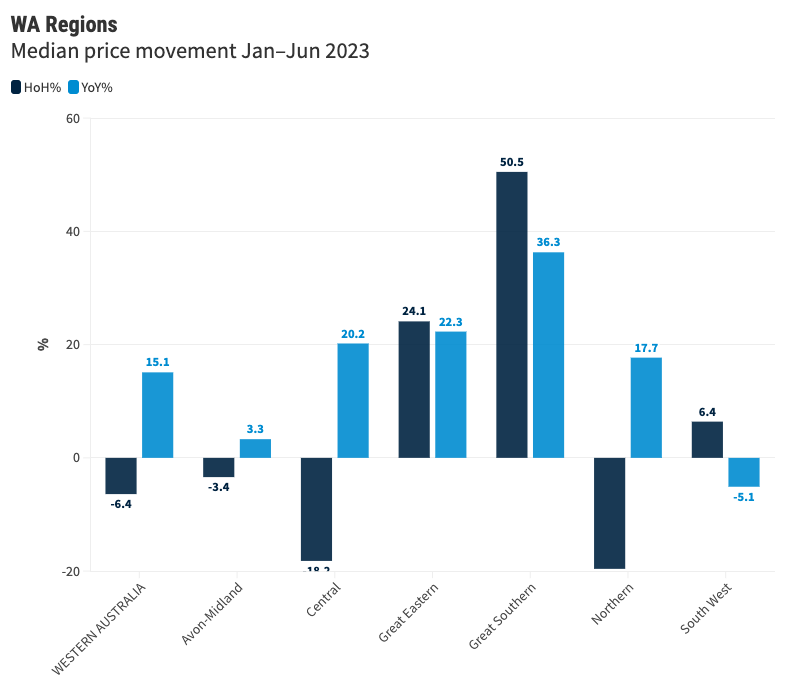
 Results
Results
